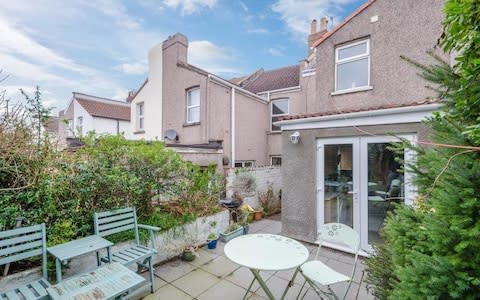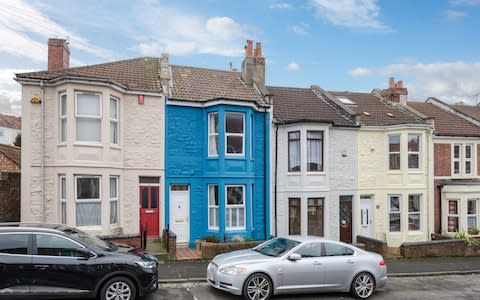First-time buyers haven't had it so good for years - here's how to join them

In many ways, first-time buyers have never had it so good. In parts of the country, house prices are flatlining, if not falling. Many buy-to-let landlords have withdrawn from the fray, meaning there is less competition.
The stamp duty amnesty for first-time buyers, cutting it completely for homes under £300,000 and reducing it for others, is keeping buying costs down. Interest rates remain low, meaning that despite sky-high price rises, owning a home is more affordable now than it was 10 years ago – and this looks set to continue.
They are certainly taking advantage: data from UK Finance show that first-time buyers bought 370,000 properties last year, more than at any point since 2006. It is also the first time since 1995 that first-time buyers have been responsible for more transactions than existing homeowners moving house. Here’s how to join them.
All about affordability
First-time buyers need to leave their prejudices at the front door and get to know previously unconsidered areas when house hunting.
In Birmingham, for example, there is life beyond the fashionable Jewellery Quarter. For value for money, Peter Smith of Knight Frank thinks that Moseley, two miles from the city centre, is the place to look. “With local bars, restaurants and independent retailers, Moseley offers a cosmopolitan atmosphere in one of the city’s leafiest suburbs,” he says.
“With the proposed reopening of the train station within the next three years, prices here are set to rise.” You can buy a brand new two-bedroom apartment for £220,000.

Bristol is one of the UK’s most expensive cities, which means most first-time buyers can forget a nice little flat in Clifton or the Harbourside. “Bedminster is a skip over the bridge from Bristol city centre and has become extremely popular with first-time buyers,” says Amanda Ake of Stacks Property Search.
“The families moving in have had the knock-on effect of independent cafés and shops springing up. Bedminster, I believe, still has plenty of growth and is one of the more interesting and cosmopolitan places to live in Bristol.” Expect to pay around £250,000 to £300,000 for a two-bedroom purpose-built flat or period terrace.
Show me the money
The Bank of Mum and Dad has become the traditional means of beating the deposit trap, now used in one quarter of housing transactions, according to L&G. But what about buyers lacking parents flush with ready cash? Happily, in an increasingly complex mortgage market, there are now many alternative forms of financial support.
“Parents who wish to maintain control over their savings may consider alternatives to simply handing them over, such as the Barclays Springboard mortgage, where savings are offset against the mortgage as security, but the parents get them back at a later date,” says Mark Harris of mortgage broker SPF Private Clients. “This can also be useful for retirement funding, ensuring parents aren’t left penniless in their old age.
“Other options include joint borrower, sole proprietor schemes. This allows parents and their children to combine their borrowing capacity to maximise mortgage lending, with only the first-time buyer on the deeds. These are increasingly popular as they mean the parent doesn’t have to pay the three per cent stamp duty surcharge for owning a second home, and the first-time buyer can also benefit from stamp duty exemption,” says Harris.
Parents whose money is tied up in their home could try the National Counties Building Society’s family mortgage. It takes family assets into account as security, so a first-timer with a five per cent deposit can benefit from better interest rates.
And buyers with no deposit at all could choose a “no-deposit” mortgage, backed by a guarantor (who will be liable to pay if the buyer defaults). According to Post Office Money, this kind of deal has accounted for one in 10 sales of first homes over the past two years.
Think frugal
Vicki and Pete Shannon, newly married and fed up of renting, decided they wanted a home of their own. Back in 2013 they set themselves a target of saving up £10,000 per year to put towards a deposit.
For three and a half years they travelled by bike, stopped eating out in favour of hosting dinners at home, and adopted an “only if truly necessary” approach to buying clothes. Adding in making packed lunches and sticking to meal plans, the couple found it reasonably painless to reach their target, on salaries of around £30,000 apiece.

“You just have to limit luxury items,” says Vicki, who swapped high-street clothes stores for vintage finds. “I gave up my gym membership, and went for a run instead, and just generally became more mindful about spending money. Going out for cocktails or dinner is great, but you have to think about how often you are going to do it.”
This simple strategy worked. Two years ago Vicki, 29, a health visitor, and Pete, 31, an architect, were able to leave their one-bedroom Battersea rental. They swapped it for their own three-bedroom garden flat in Thornton Heath, south London, which cost £350,000. Thanks to their scrupulous saving they were able to put down a 10 per cent deposit, and cover stamp duty.
Get subsidised
The Government’s flagship Help to Buy scheme will run until 2023, offering buyers a 20 per cent Government loan (40 per cent in London) to put towards a property. This means they need a five per cent deposit, and a mortgage for the remaining 55 per cent.
The scheme has got some downsides. It applies only to new-build homes, for which buyers will pay a premium, and while the Government loan is interest-free for the first five years, interest kicks in during the sixth – so owners will then either have to sell up or find a way to pay an extra monthly bill on their home.
Another option is Shared Ownership. Many buyers have an instinctive knee-jerk reaction against the idea of only buying part of a property and continuing to pay rent on the segment they don’t own. But housing associations insist they gear payments to make sure it works out cheaper than renting an equivalent property. Buyers can also increase the proportion of the property they own over time, eventually becoming outright owners.

Like Help to Buy, this scheme only covers new homes, and demand wildly exceeds supply so finding a shared ownership flat can be a task. Buyers have to pay a monthly service charge on top of everything else, and when it comes to selling up, housing association clients have first dibs, which can keep prices down.
“These schemes may have their critics, but for the majority they provide an invaluable lifeline for those who really need them,” says Lynda Clark of the First Time Buyer Group. “Not everyone has access to the bank accounts of previous generations, so starting a savings plan from scratch may take years.
“By taking the whole process and breaking up into more manageable chunks, which is on the whole what these schemes do, first-time buyers are able to take that initial leap onto the ladder while continuing to save at the same time. After all, no one wants to be paying their landlord’s mortgage for the rest of their life.”
Bargain hunt
There are certain types of property that traditionally offer more bang for your buck. A flat above a shop can be a great starter home (so long as you avoid living above a noisy fast-food restaurant or something off-putting like an undertakers). They are typically 10 to 20 per cent cheaper than a conventional property.

You will also pay less per sq ft for an ex-local authority flat. Look for homes built pre-1950 which had really generous space standards, but treat large post-war estates with caution because a property in a concrete jungle can be hard to sell.
Buying a wreck is another option, although in a flat market there is a lot less margin than there was when prices were flying. A study by Direct Line found that a home needing major structural work will typically cost 17 per cent less than one in good condition, although be warned that £40,000 can very easily get swallowed up in a renovation. A more realistic option might be a property requiring only minor structural work, which costs on average six per cent less than the market average.
The art of negotiation
“In the present challenging market, it is not at all uncommon for prospective purchasers to make offers up to 30 per cent below the list price,” says Mark Pollack of Aston Chase estate agents. “But a purchaser needs to judge how realistic the asking price is in the first instance and seek guidance from the agent, as a derisory opening offer will more often than not prove to be counterproductive.”
If you can’t secure the property at a price you consider fair in the current market then walk away. There are plenty of houses out there, and waiting a little longer for the perfect home is a whole lot better than paying over the odds in a slow market.

 Yahoo Finance
Yahoo Finance 